Colonia Ulpia Traiana
Q464588Xanten: city on the Lower Rhine, close to the Roman legionary base Vetera and the ancient city called Colonia Ulpia Traiana.

The town that was later known as the Colonia Ulpia Traiana may date back to the fourth century BCE. Archaeologists have found traces from the third century too, but there is no evidence for continued occupation of the site in the second and first centuries BCE, when Germanic tribes became more influential. On the other hand, the location at the confluence of the rivers Lippe and Rhine cannot have failed to attract people. If they did not live on the exact site of the future Colonia Ulpia Traiana, they must have lived in the immediate vicinity.
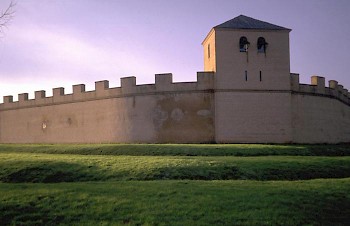
In 13/12, the Roman general Drusus, the stepson of the emperor Augustus, ordered the construction of Castra Vetera, a military base that offered accommodation to at least one Roman legion. During the following years, he and his brother Tiberius (the future emperor) campaigned on the east bank of the Rhine. In 8 BCE, the tribe of the Sugambri was forced to migrate to the west bank, where they settled near Castra Vetera. This Germanic tribe, now known as Cugerni, founded the town that was later known as Colonia Ulpia Traiana.
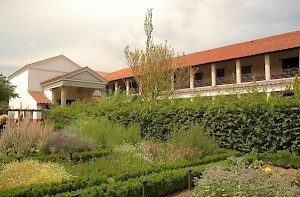
The town soon became the main civil settlement near the army base, where the soldiers could buy things, visit pubs, and raise a family. Nijmegen was created in a similar way. Boom towns like these were usually called "the city of tribe X", and we can assume that Xanten was by now known as the Municipium Cugernorum or something like that. An inscription suggests a second name, Cibernodurum, which means more or less the same: the element durum signifying a market and Ciberni being a variant spelling of Cugerni. (In a similar fashion, Nijmegen was the Oppidum Batavorum and was also called Batavodurum.)
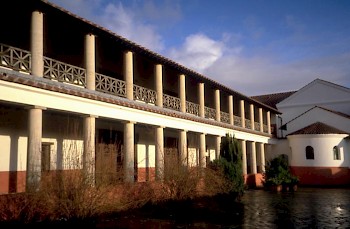
A burning layer proves that Cibernodurum was destroyed during the Batavian revolt (69-70). It was rebuilt after Petillius Cerialis had restored order in the Rhineland in the autumn of 70. Much pottery and tiles were produced by the nearby Twenty-second legion Primigenia. At the beginning of the reign of Trajan, whose full name was Marcus Ulpius Traianus, the town received the status of colonia (between 98 and 107) and was called after the emperor, Colonia Ulpia Traiana. The town was now rebuilt again on a grand scale; about 10,000 people lived within its walls, which had a length of 3.4 km. The stone quaries of the Brohl valley were used intensively. After Cologne, Xanten was the largest town of Germania Inferior.
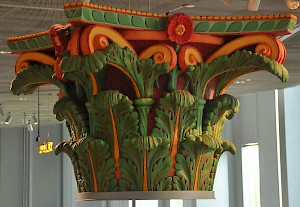
Like all new Roman towns, Xanten had a gridiron layout. Its amphitheater has been excavated, just like the Hadrianic bathhouse (which has the same map as the thermae of Heerlen, although Xanten is four times larger), temples dedicated to the Capitoline Triad, Portunus (both in Mediterranean style) and the Matres (native style), its town wall and gates, market with town hall (forum and basilica), an inn, and the district of the artisans. Today, several of these buildings have been reconstructed, because the ancient city is currently rebuilt as the "Archäologische Park Xanten". The country surrounding Colonia Ulpia Traiana produced barley, wheat, milk and meat for the soldiers of the nearby fortress, so we can assume that most people from Xanten were farmers and peasants.
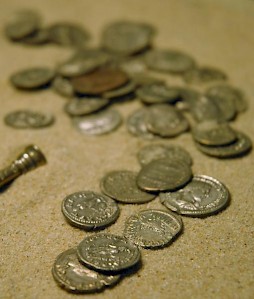
In 260, the Franks crossed the Rhine and occupied large parts of Germania Inferior. Although the decline of Xanten had started earlier - the Rhine had changed its course - it appears that it was still an important target for the invaders. The city survived, although at least one man or woman was unable to recover a treasure of 390 silver pieces, three spoons, a dish, and several other objects, which remained buried until it was excavated by archaeologists.
The city was less lucky after a second invasion, in 275. For some time, Xanten was a ghost town. Another factor may have been the acidification of the soil, which made it hard to produce barley and wheat.
At the end of the third century, the Roman emperor Constantius I Chlorus restored order. The town was refounded with exceptionally strong walls, and this suggests that it was no longer a civil settlement but had become the military base of the Thirtieth Legion Ulpia Victrix used the center of the town. It is a bit strange, however, to note that there are hardly any coins from this settlement, which suggests that it was only used during crises.
Xanten was now known as Tricensimae, "thirty".note The name Traiana also survived and was rendered as Tronje, the native town of Hagen, one of the heroes of the famous Nibelungen epic.
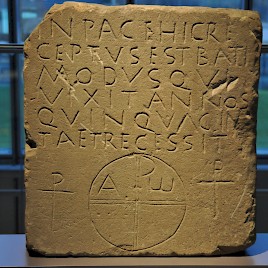
In the fourth century, the Christians venerated Saint Victor, who was buried on the cemetery southeast of Tricesimae. In fact, the modern name Xanten is derived from Ad santos, "Near the saints". This name is also known from the Nibelungen epic, as the city of Siegfried. This is probably not coincidental, because in the sixth century, Xanten had become a castle of the Franks, and the name Siegfried may be a translation of Victor (both names mean "victorious", and both Victor and Siegfried were known as dragon slayers).
Literature
Hans-Joachim Schalles, Martin Müller, Norbert Zieling (eds.) Colonia Ulpia Traiana. Xanten und sein Umland in römischer Zeit (2008)